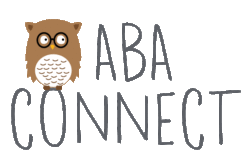Group Contingency
A group contingency is a behavior management protocol where a single consequence (it can be a reward or aversive) is given based on either the behavior of an individual in a group, the behavior of a particular set of people within the group or the group as a whole. The entire group receives the consequence. This type of behavior management leverages peer pressure and peer monitoring.
TYPES:
Independent group contingency: The contingency is presented to all but earned by only those who meet the criterion.
Dependent group contingency: The reward for the whole group is based on the performance of either an individual or collection of individuals within the group. Can be called the hero procedure when an individual earns a reward for the whole group.
Interdependent group contingency: All members of the group must meet criterion before any member receives the consequence. This is the “all or none” procedure. The consequence can be delivered based on one of several ways:
- Total group meets criterion: This can be done by setting a 100% compliance – the whole group must successfully accomplish the contracted event.
- Group averaging: Base success on a mean group score
- Good behavior game: Barrish, Saunders, and Wolf (1969) came up with this strategy for classroom management. They divided the class into 2 groups and monitored disruptive behaviors. The team with least infraction wins the reward.
- Good student game: Combines Good Behavior Game with self-monitoring. Teacher decides a) what are the target behaviors to change b) what are the goals and what are the rewards for hitting the goals c) whether it will be group or individual monitoring (or both)
PLACHECK (planned activity check) is a recording method on a group behavior and the observer headcounts the number of people engaging in a target behavior at the end of each interval. For example, a teacher can count the number of children actively reading a book during “quiet” time.




Hello ABA Connect in Austin. Our work is soon coming to Texas the more sophisticated version of GBG that has all the amazing long-term results. It will be a great opportunity for ABA folks, because it also has roles trainers, coaches, and people working with Tier 2 and Tier 3 as well as the Universal level. Good to http://www.paxis.org or whole suite of sites is being re-done right now for http://www.goodbehaviorgame.org. ABA people might want to read two papers about the evolution of GBG to become the first RCT to prevent population level prevention of DSM disorders. Several papers will help ABA providers a much greater understanding of the improvements over time (BTW, I’m a Don Baer student).
Johansson, M., et al. (2020). “The PAX Good Behavior Game: One Model for Evolving a More Nurturing Society.” Clinical Child and Family Psychology Review 23: 462–482. https://pubmed.ncbi.nlm.nih.gov/32839866/
Wilson, D. S., et al. (2014). “Evolving the Future: Toward a Science of Intentional Change.” Brain and Behavioral Sciences 37(4): 395-416.
Biglan, A. and D. D. Embry (2013). “A Framework for Intentional Cultural Change.” J Contextual Behav Sci 2(3-4).
Embry, D. D. and A. Biglan (2008). “Evidence-Based Kernels: Fundamental Units of Behavioral Influence.” Clinical Child & Family Psychology Review 11(3): 75-113.
Embry, D. D. (2002). “The Good Behavior Game: A Best Practice Candidate as a Universal Behavioral Vaccine.” Clinical Child & Family Psychology Review 5(4): 273-297.
Very interesting! I will look more into this! Thanks for posting!